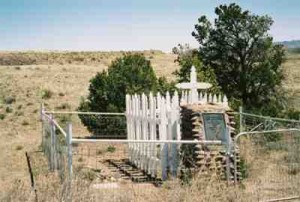Review by Annie Mueller
Environment – June 2007 – Colorado Central Magazine
Lead Astray: Inside An EPA Superfund Disaster
by Peter Samuel
Published in 2002 by Pacific Research Institute
ISBN 0-936488-86-7
THE TITLE OF Hal Walter’s October 2006 column about his concerns for his young son’s health after finding out his neighborhood roads were contaminated with lead was “Leadville All Over Again.” And Peter Samuel’s book Lead Astray could appropriately be subtitled “Leadville All Over Again and Again and Again.” Or possibly, “Good Enough for Government Work.”
Lead Astray is a highly readable and persuasive indictment of the Environmental Protection Agency’s costly and ineffective reliance on removing soil to remediate lead problems — even in places where other experts agree there is no real problem. Each of the 20 or so Superfund sites analyzed in Samuel’s book (which includes Aspen but not Leadville) vary only in the details when compared to the ongoing California Gulch Superfund site in Lake County.
Peter Samuel begins his book with an overview of the science of lead, its use in human history and as a key element of concern for the EPA and Centers for Disease Control. He acknowledges the government’s great success in reducing lead emissions, which fell 98% between 1975 and 1995, due to restrictions on leaded gasoline.
However, according to Samuel, the EPA’s standards would mean that all of us in our late thirties and older are victims of lead poisoning. And the fear propaganda promulgated by the EPA, implies that older Americans should all have brain damage and all sorts of other problems due to lead. (So maybe there is something to Hal Walter’s informal study, showing “a significant level of cognitive and social dysfunction among residents in his neighborhood” — revealed by his neighbors’ addiction to FOX News, Republican candidates, and questionable livestock management practices.)
Lead Astray shows that Hal’s concerns for his son’s health represent a vision the EPA works to instill. Lead in soil is lumped with all heavy metals, and the horrible symptoms of lead poisoning are fearfully described, until the specter of a malevolent threat hangs over affected communities. But according to Samuel’s research, it is leaded paint, once promoted by the Feds and used ubiquitously until the late 1950s, that poses a real and continued threat to children. Paint in old houses abrades, creating a fine dust that is easily absorbed and therefore bioavailable to young children. The lead in soil or mine waste, on the other hand, is of a size and type that is simply not readily bioavailable.
Hal worries that lead has limited his son’s speech development. But kids speak clearly at a great variety of ages, from six months to four or five years old (and then some never shut up). Even though Mrs. Walter may have run and inhaled lead dust on county roads before and during her pregnancy, Samuel’s book would lead one to conclude that unless she was impacted by massive amounts of the stuff, what little she inhaled was probably stored in her bones as a safety measure.
But if there is doubt about a child’s lead exposure, the message in Lead Astray is: Do not seek assistance from the EPA. Instead have a blood test arranged by the county nurse. If concern continues, vacuum frequently and use a HEPA Vac if you can. Wet mop. Have young children wash their hands often. Consider removing any exotic imported items in the home such as candles, toys, or medicines that may contain lead. And discontinue hobbies like casting lead bullets or sinkers.
Lead Astray has 15 chapters, and chapter 16 could easily be about Lake County’s California Gulch Superfund site which started because mine drainage was flowing into the Arkansas River. The EPA fixed that, and other “hot spots” left from mining. Then, true to form, the EPA became entrenched, expanding the site to 18 square miles including Leadville, and applying their questionable remedy of removing yard soils for a non-existent problem.
Now the residential part of the Superfund site, 1/8 of Operable Unit 9 or OU9, has met the allowable lead standards set by the Feds and State for four straight years. Those few residents who once tested above the safety level for lead have steadily reduced the level of lead in their blood by using the methods outlined above. In 2006, there was not a single child with elevated blood lead levels in Leadville, yet Leadville remains on the National Priorities List — or NPL, which could more aptly be named the National Perfidies List.
But of course, that’s only if you agree with Samuel’s conclusions. I do agree. In fact, I found his book to be informed, clear, and convincing. But you may not. Either way, however, Lead Astray introduces important facts, figures, stats and arguments about controversial EPA strategies which continue to hold Leadville captive.
Annie Mueller lives in Operable Unit 9 of the California Gulch Superfund Site, drinks well water, eats backyard garden produce, and can still read, write and think — more or less.

